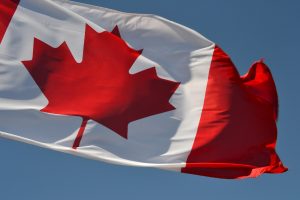[ad_1]
Jamie Golombek: Take into account these planning ideas earlier than Dec. 31 to be sure you’re taking full benefit of the RESP

Critiques and proposals are unbiased and merchandise are independently chosen. Postmedia could earn an affiliate fee from purchases made by means of hyperlinks on this web page.
Article content material
This week has been dubbed Training Financial savings Week, a part of the federal authorities’s Monetary Literacy Month initiative happening throughout November. Acknowledging that the monetary facet of going to varsity or college “is usually a burden and a supply of stress for each college students and fogeys,” the objective of the week is to alleviate this strain “by serving to mother and father, particularly these with modest incomes, plan for his or her little one’s future.”
Commercial
This commercial has not loaded but, however your article continues beneath.
Article content material
Maybe one of the best ways to save lots of for postsecondary schooling is by way of the registered schooling financial savings plan (RESP). These plans proceed to be extremely popular amongst Canadians, in response to the most recent Employment and Social Improvement Canada’s Annual Statistical Overview of RESPs.
There are just a few RESP planning tricks to take into account earlier than Dec. 31 to be sure you’re taking full benefit of this car, however let’s evaluation just a few fundamentals first.
An RESP is a tax-deferred financial savings plan that permits mother and father to contribute as much as $50,000 per little one towards saving for post-secondary schooling. The addition of presidency cash within the type of Canada Training Financial savings Grants (CESGs) can add as much as $7,200 per beneficiary to the plan.
The CESG consists of a fundamental CESG, which is accessible to households of all earnings ranges, and an extra CESG for beneficiaries from low- and middle-income households. The fundamental CESG is the same as 20 per cent of the primary $2,500 of contributions made into an RESP for annually, or as much as the primary $5,000 in contributions if adequate CESG carry ahead room exists from prior years.
Commercial
This commercial has not loaded but, however your article continues beneath.
Article content material
Beneficiaries from low-income (household earnings as much as $49,020 in 2021) or middle-income (greater than $49,020 and as much as $98,040) households may additionally qualify for the extra CESG, which is a cost of 10 per cent or 20 per cent on the primary $500 of contributions made annually. CESGs can be found as much as the tip of the calendar yr during which the beneficiary turns 17.
Contributions you made to an RESP, which weren’t tax-deductible, can usually be withdrawn at any time, tax-free. (If not for schooling, nonetheless, CESGs could should be repaid). Some other funds popping out of the plan for post-secondary schooling are known as “instructional help funds” or EAPs. This contains the earnings, beneficial properties and CESGs within the RESP. These are taxable when paid out to the coed, who could find yourself paying little or no tax based mostly on the provision of varied tax credit and whether or not they had different earnings (mentioned additional beneath).
Commercial
This commercial has not loaded but, however your article continues beneath.
Article content material
In accordance with the current authorities evaluation, $70 billion was invested in RESP property as of Dec. 31, 2020. Final yr, RESP subscribers contributed $5.2 billion to the plans and the federal government paid a bit of greater than $1 billion in CESGs on behalf of three million beneficiaries. The common annual contribution per beneficiary final yr was $1,657.
As for accessing the funds for schooling, a complete of $3.9 billion was withdrawn from RESPs final yr for practically 420,000 beneficiaries, with the typical withdrawal per pupil being $9,375. The whole quantity withdrawn in 2020 was down from the $4.4 billion taken out in 2019, which marked the primary lower in withdrawals because the program got here into impact. This coincided with a drop within the variety of college students making withdrawals, which peaked at 466,203 college students in 2019.
Commercial
This commercial has not loaded but, however your article continues beneath.
Article content material
The report cites the COVID-19 pandemic for the probably drop in college students’ monetary wants — and, thus, RESP withdrawals — for 2020. For instance, some post-secondary instructional establishments closed final yr, so a number of the prices related to in-person attendance, corresponding to room and board prices, decreased. As well as, some college students could have briefly opted out of their program due to class cancellations and/or determined to attend for in-person courses to renew earlier than re-enrolling.
In mild of the info above, and with 2021 coming to an in depth, what can mother and father and college students do earlier than Dec. 31 to maximise RESP advantages this calendar yr?
First, in case your (grand)little one turned 15 this yr and has by no means been a beneficiary of an RESP, no CESG might be obtained in future years except no less than $2,000 is contributed to an RESP by year-end. Take into account making your contribution by Dec. 31 to obtain the present yr’s CESG, and create CESG eligibility for 2022 and 2023.
Commercial
This commercial has not loaded but, however your article continues beneath.
Article content material
Extra usually, provided that the typical RESP contribution in 2020 was solely $1,657 per little one, some mother and father aren’t contributing sufficient to get the utmost annual CESGs. When you can afford it, contributing no less than $2,500 per little one in 2021 will get you the total 20-per-cent CESG or $500 per little one. When you’ve acquired CESG carry-forward room, doubling your contribution to $5,000 can yield $1,000 in CESGs per little one in 2021.
Commercial
This commercial has not loaded but, however your article continues beneath.
Article content material
On the withdrawal entrance, in case your (grand)little one is an RESP beneficiary and attended a post-secondary instructional establishment in 2021, take into account having EAPs constituted of the RESPs earlier than the tip of the yr. Though the quantity of the EAP can be included within the pupil’s earnings for 2021, relying on the coed’s different earnings, maybe from part-time or summer season employment, the EAP earnings can be successfully tax-free if the coed has adequate private tax credit.
For instance, a pupil may withdraw a complete of $20,500 in EAPs with no tax if that they had no different earnings and claimed the 2021 enhanced federal fundamental private quantity (BPA) of roughly $13,800 and had undergrad Canadian tuition charges (averaging $6,700) eligible for the tutoring tax credit score. Alternatively, the coed could solely want to take EAPs as much as the federal BPA of $13,800 , permitting the tutoring to be transferred to a (grand)mum or dad or partner or associate (as much as the $5,000 most switch restrict).
Commercial
This commercial has not loaded but, however your article continues beneath.
Article content material
Lastly, in case your (grand)little one is an RESP beneficiary and stopped attending a post-secondary instructional establishment in 2021, EAPs can solely be paid out for as much as six months after the coed has left the college. You could, due to this fact, want to take into account having last EAPs constituted of RESPs of which the coed is a beneficiary — if it’s not already too late.
Jamie Golombek, CPA, CA, CFP, CLU, TEP is the managing director, Tax & Property Planning with CIBC Non-public Wealth in Toronto. [email protected]
_____________________________________________________________
For extra tales like this one, join for the FP Investor e-newsletter.
______________________________________________________________
Commercial
This commercial has not loaded but, however your article continues beneath.
[ad_2]










Leave a Reply